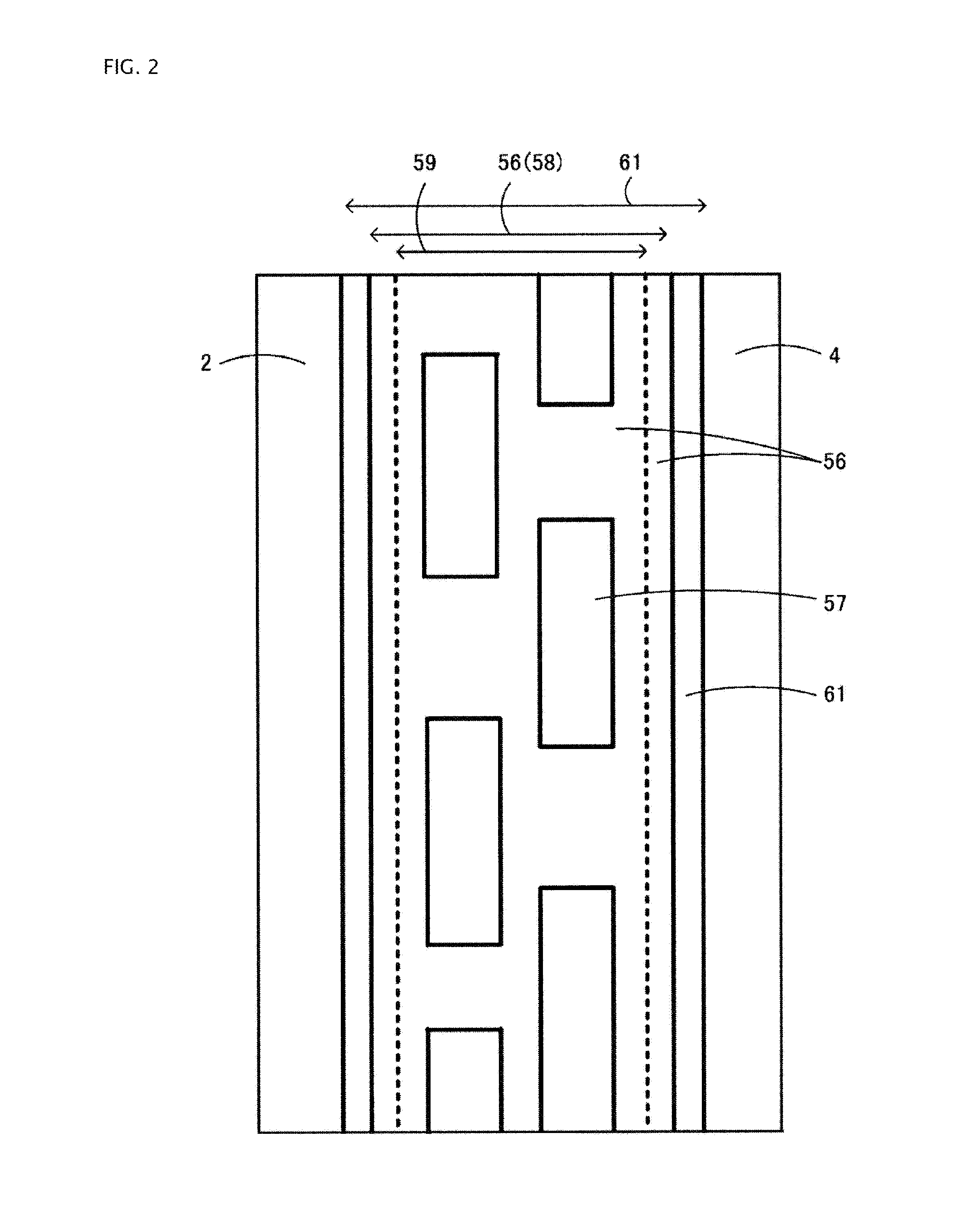High-voltage integrated circuit device
a high-voltage integrated circuit and circuit technology, applied in semiconductor devices, process and machine control, instruments, etc., can solve the problems of failure or destruction of hvic b, failure or destruction of chips, etc., to prevent erroneous operation and latchup of logic portions and prevent erroneous operation and destruction of low-side circuit portions
- Summary
- Abstract
- Description
- Claims
- Application Information
AI Technical Summary
Benefits of technology
Problems solved by technology
Method used
Image
Examples
embodiment 1
[0079]FIG. 1 is a cross-sectional view showing principal portions of the high-voltage integrated circuit device of Embodiment 1 of the invention. In the high-voltage integrated circuit device 100 shown in FIG. 1, on one of the main faces (hereafter called the surface layer) within a p semiconductor substrate 1 are formed an n region 3 which becomes an n well region, which is a high-side floating potential region; an n− region 4, which becomes a high-voltage junction terminating region 93; and an n− region 2 forming a low-side L-VDD potential region.
[0080]This high-voltage integrated circuit device 100 corresponds to the HVIC 111 which is the driving element shown in FIG. 9, and in particular, corresponds to the low-side circuit portion and high-side circuit portion shown in FIG. 10 controlling the upper-arm IGBT 115 of a half bridge. In FIG. 1, the level-raising circuit is omitted. The level-lowering circuit shown in FIG. 11 can be provided, as necessary, in the high-voltage integra...
embodiment 2
[0108]FIG. 4 is a cross-sectional view showing the principal portions of the high-voltage integrated circuit device of Embodiment 2 of the invention. The high-voltage integrated circuit device 200 of Embodiment 2 differs from the high-voltage integrated circuit device 100 of Embodiment 1 shown in FIG. 1 in that a second universal contact region 68 is also formed under the second pickup electrode 69 connected to the H-VDD terminal. The second universal contact region 68 is formed of n+ regions 62 and p+ regions 63 disposed in mutual alternating contact along the surface of the p semiconductor substrate 1. An explanation is omitted, but the planar pattern of the first universal contact region 58 is the same as the planar pattern (FIG. 2) of the first universal contact region in Embodiment 1.
[0109]FIG. 5 is a plane view showing the planar pattern of the second universal contact region. The second universal contact region 68 has a rectangular planar shape surrounded by the n+ region 62,...
embodiment 3
[0117]FIG. 7 is a cross-sectional view showing the principal portions of the high-voltage integrated circuit device of Embodiment 3 of the invention. A difference between the high-voltage integrated circuit device 300 of Embodiment 3 and the high-voltage integrated circuit device 200 of Embodiment 2 in FIG. 4 is that only the second universal contact region 68 is formed, and a first universal contact region 58 is not formed.
[0118]By forming the second universal contact region 68, when a negative surge voltage is applied to the H-VDD terminal via the Vs terminal, the quantity of electrons injected into the p region 61 is reduced, as explained in Embodiment 2 referring to FIG. 6. As a result, the quantity of electrons flowing into the n− region 2 is reduced, and erroneous operation and destruction due to latchup of the logic portion of the low-side circuit portion 91 can be prevented.
[0119]On the other hand, a portion of the holes injected into the n− region 4 are drawn into the p+ re...
PUM
 Login to View More
Login to View More Abstract
Description
Claims
Application Information
 Login to View More
Login to View More - R&D
- Intellectual Property
- Life Sciences
- Materials
- Tech Scout
- Unparalleled Data Quality
- Higher Quality Content
- 60% Fewer Hallucinations
Browse by: Latest US Patents, China's latest patents, Technical Efficacy Thesaurus, Application Domain, Technology Topic, Popular Technical Reports.
© 2025 PatSnap. All rights reserved.Legal|Privacy policy|Modern Slavery Act Transparency Statement|Sitemap|About US| Contact US: help@patsnap.com



